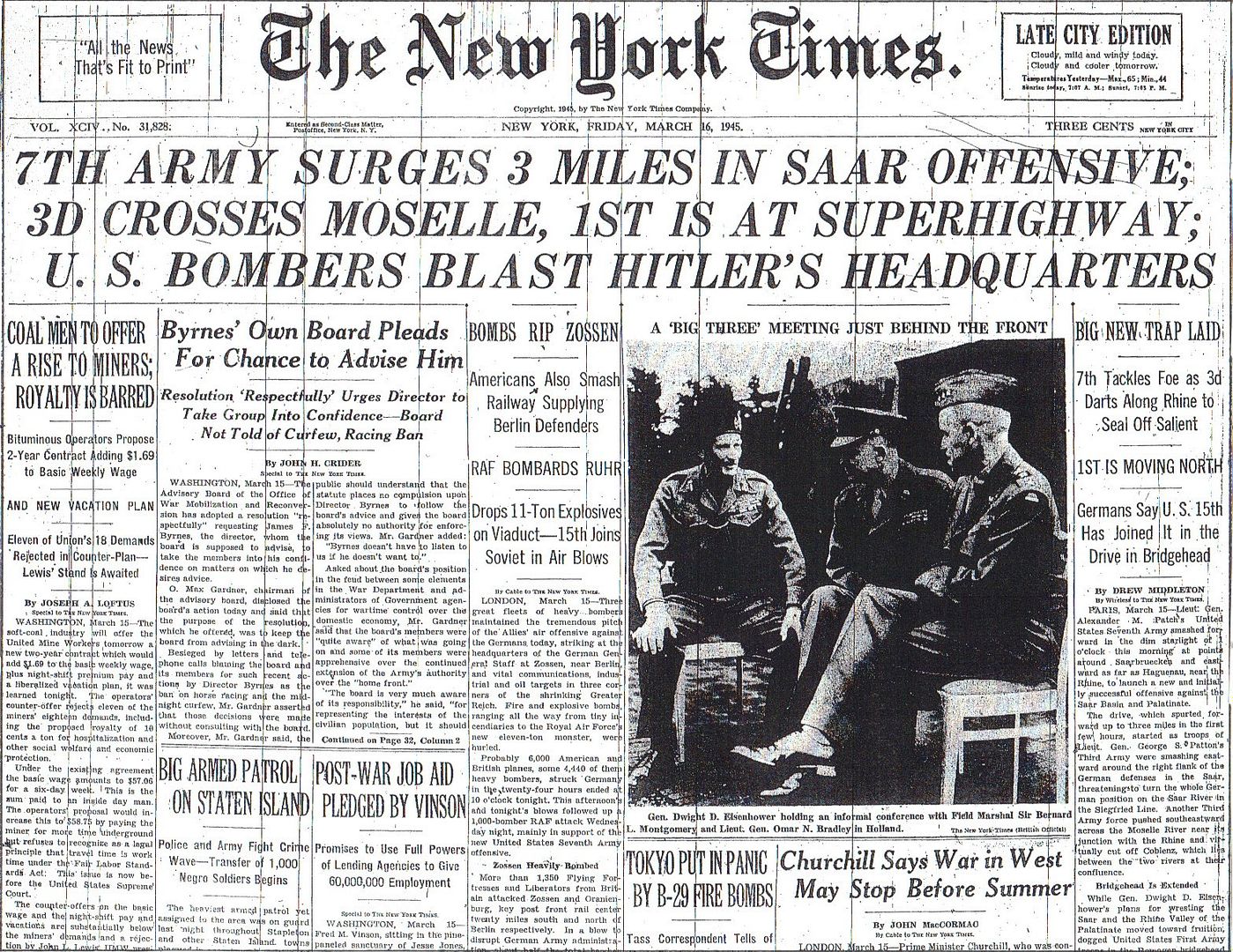
Posted on 03/16/2015 4:33:42 AM PDT by Homer_J_Simpson

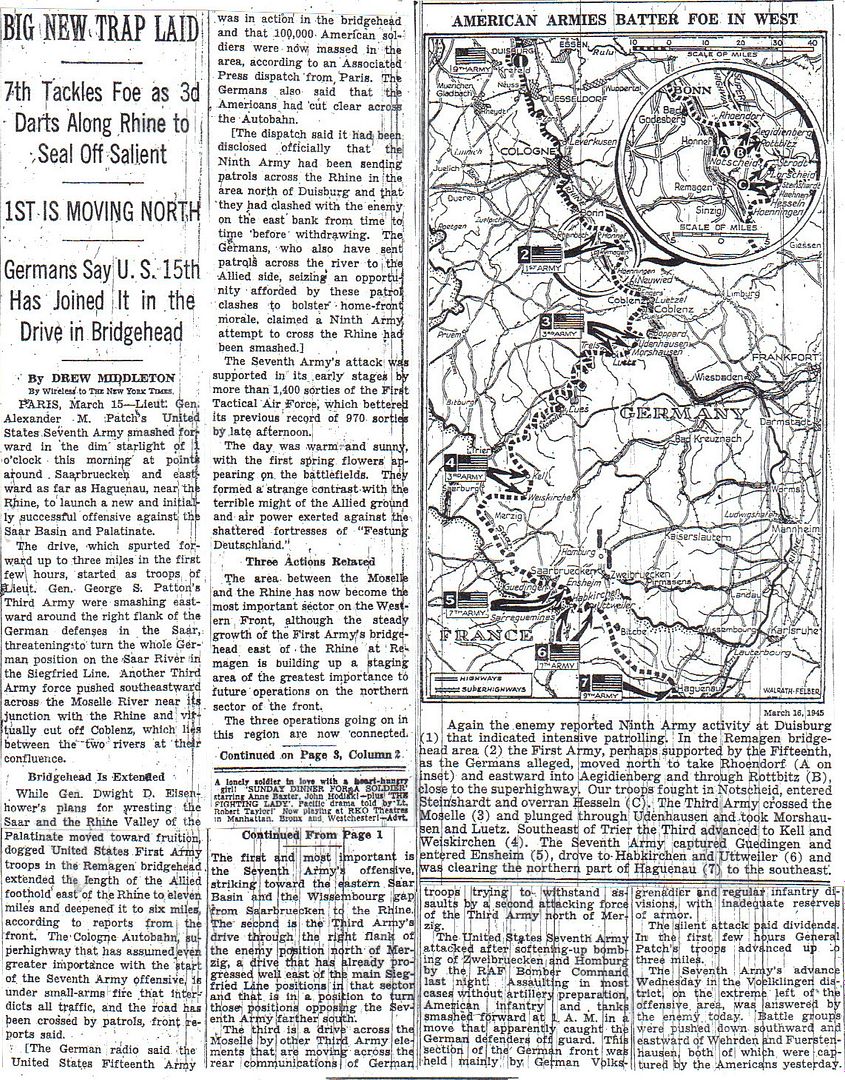
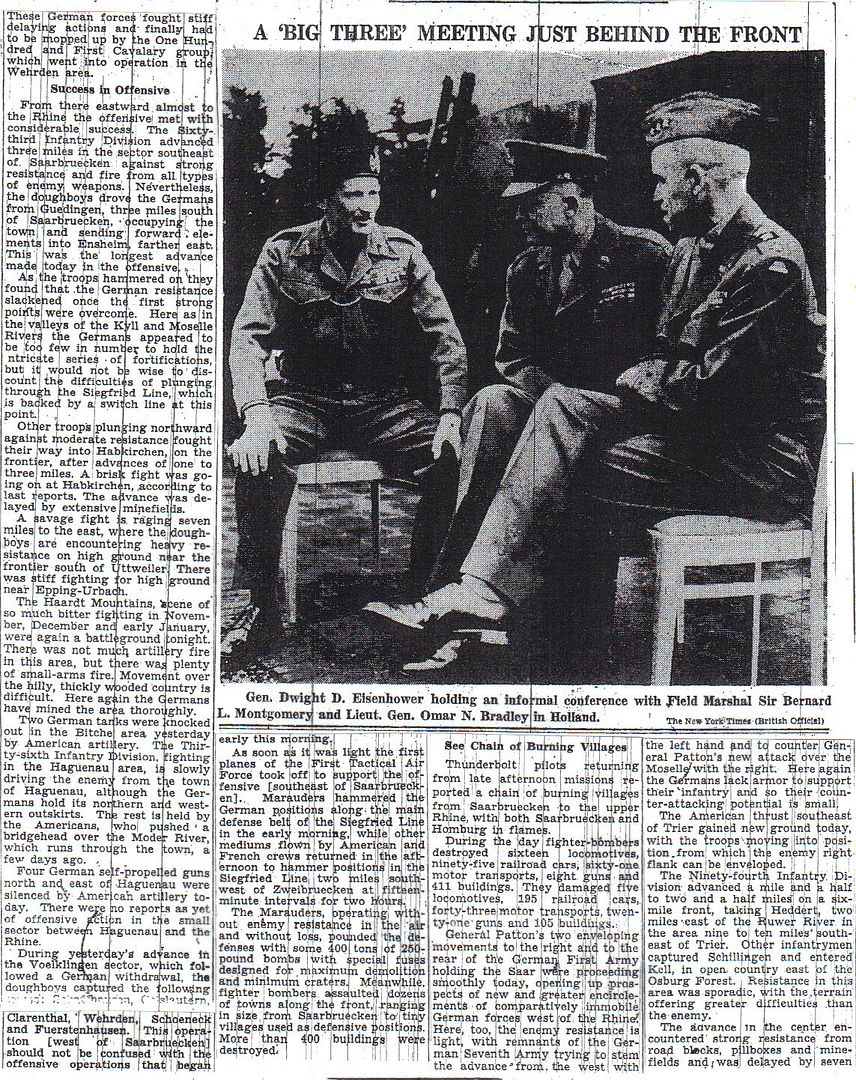
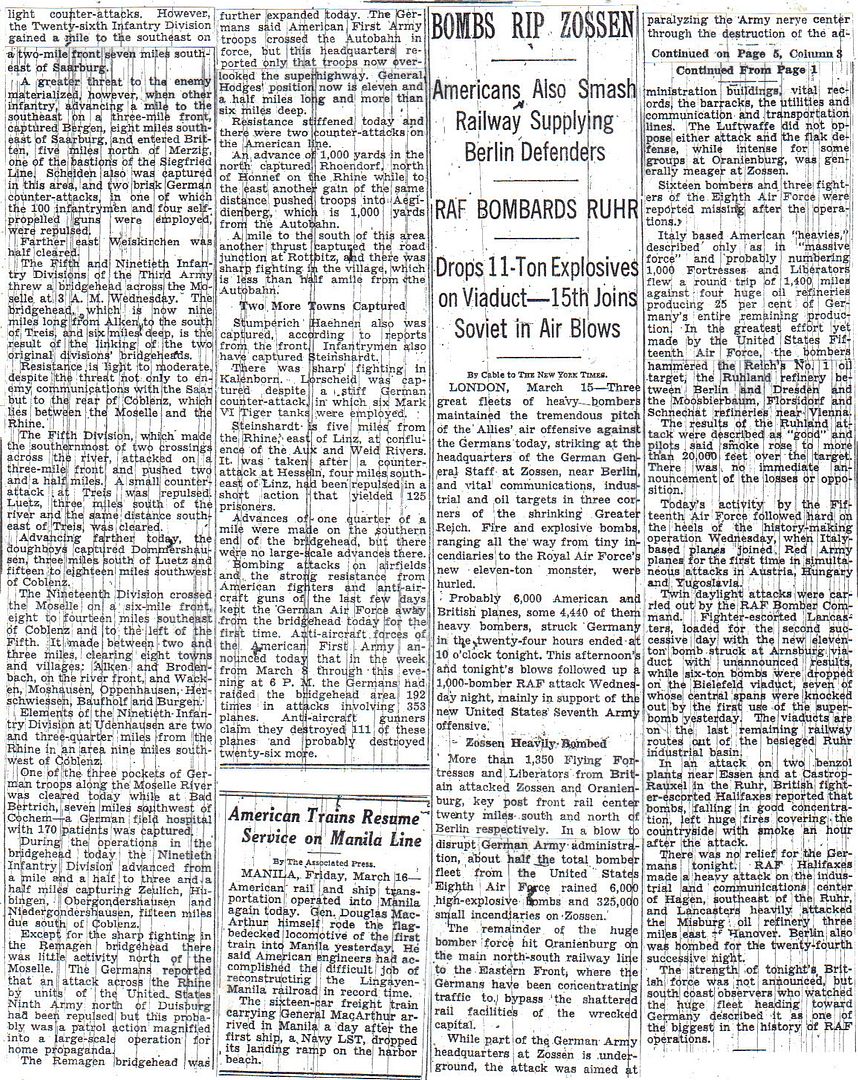
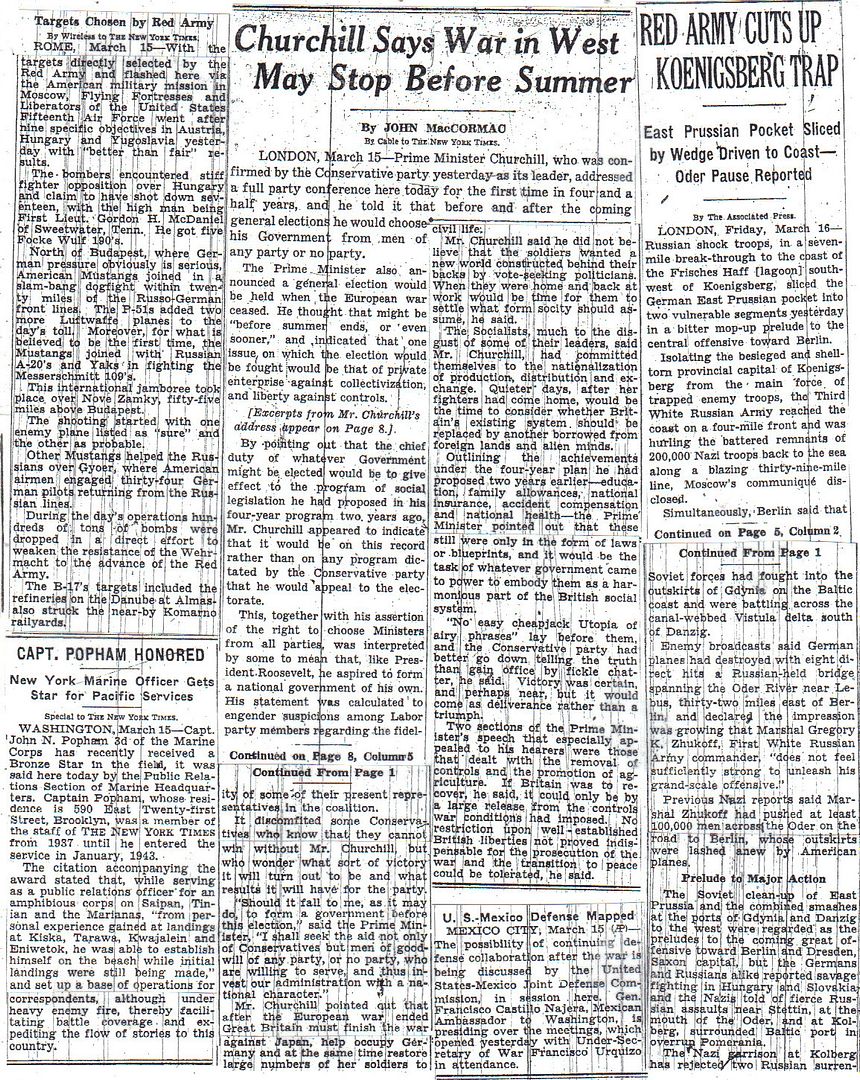
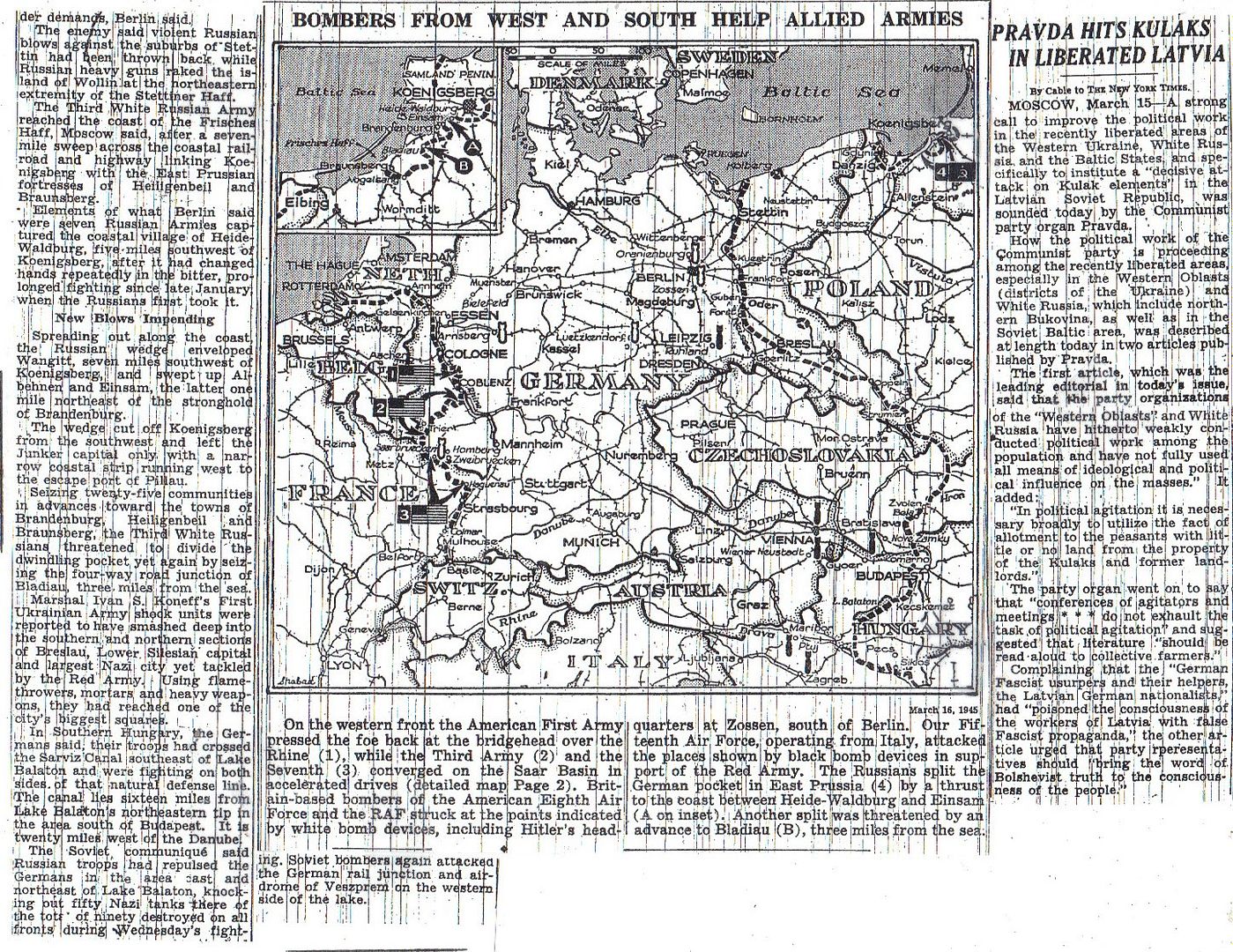
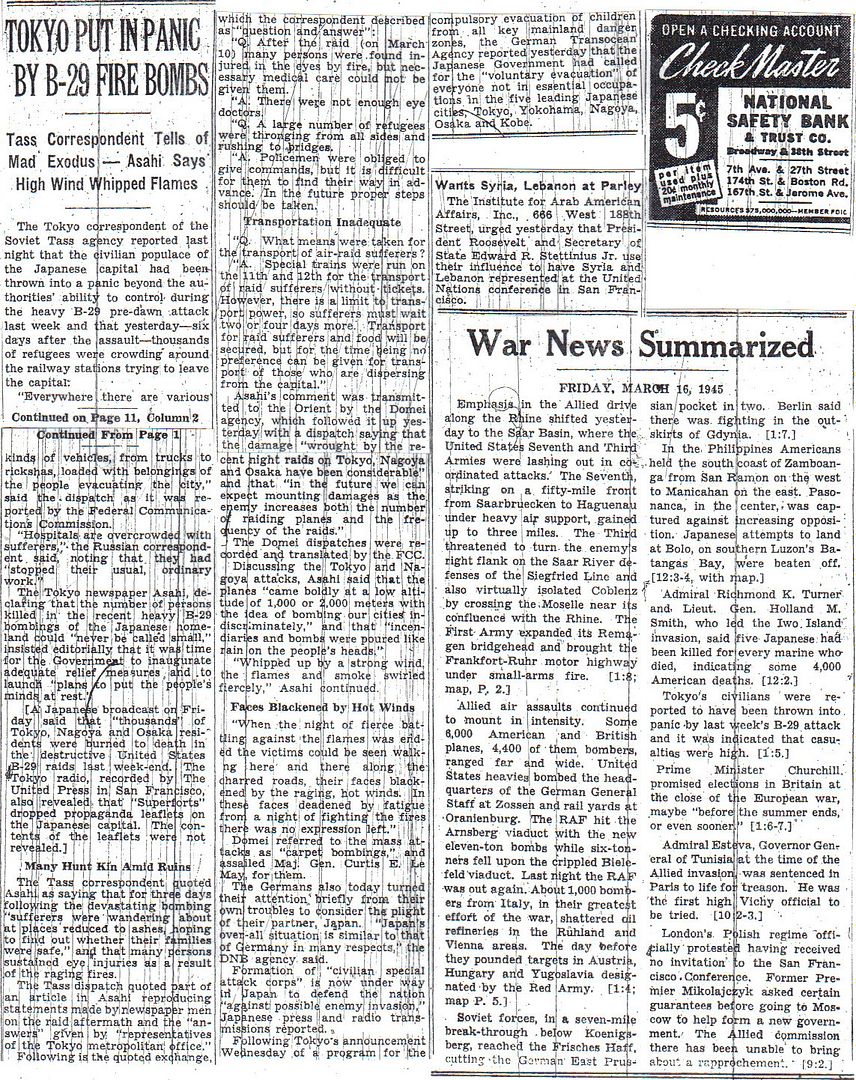
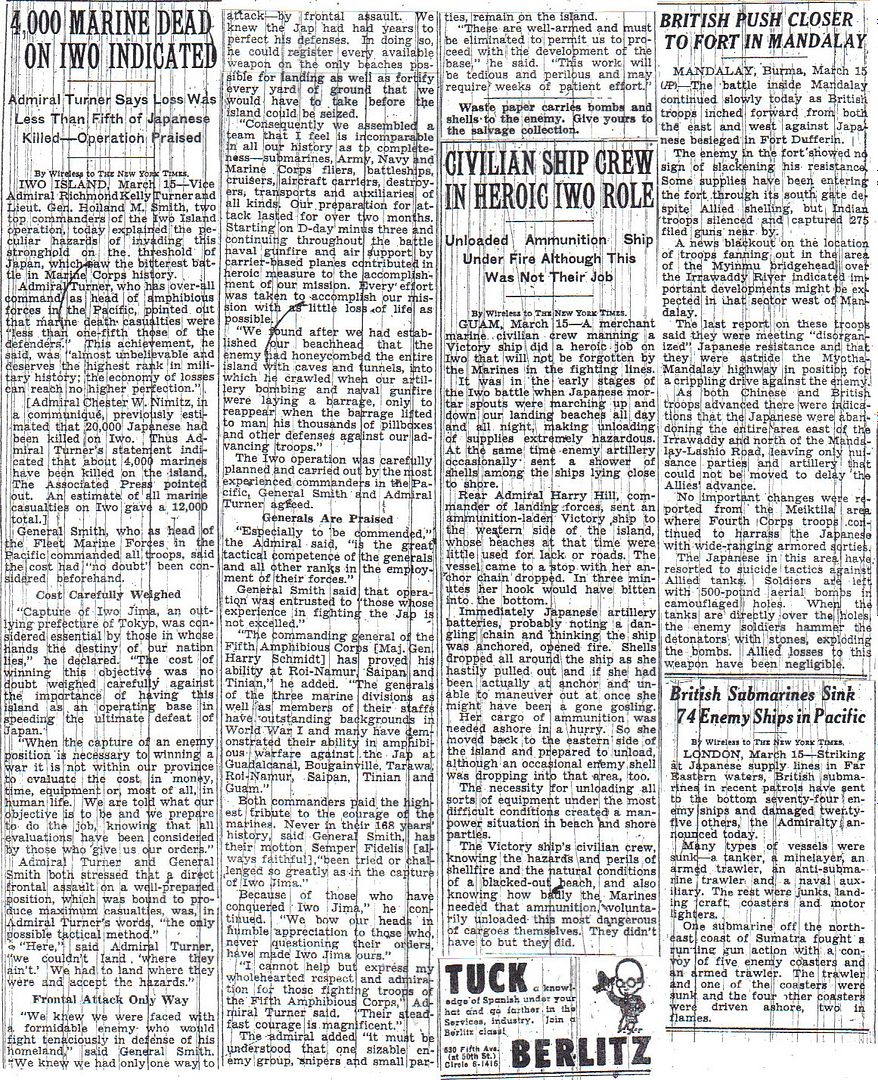
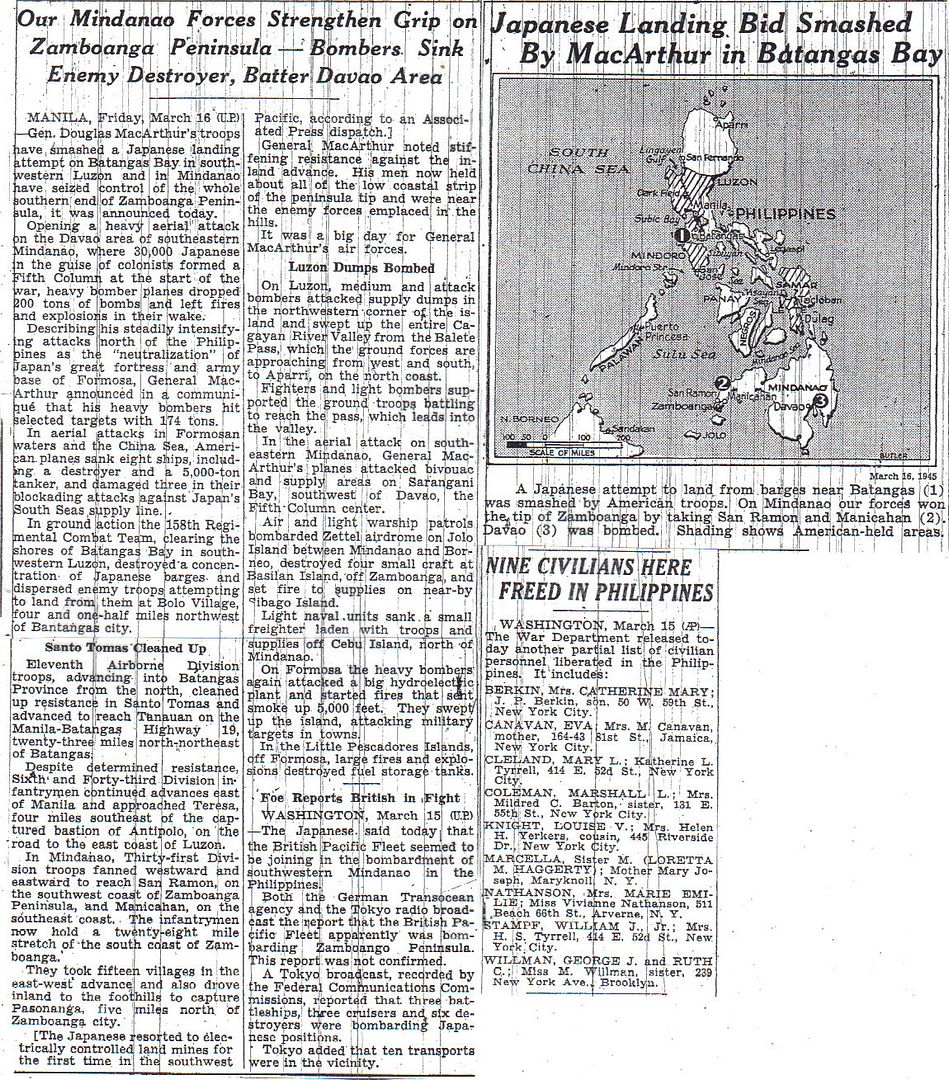
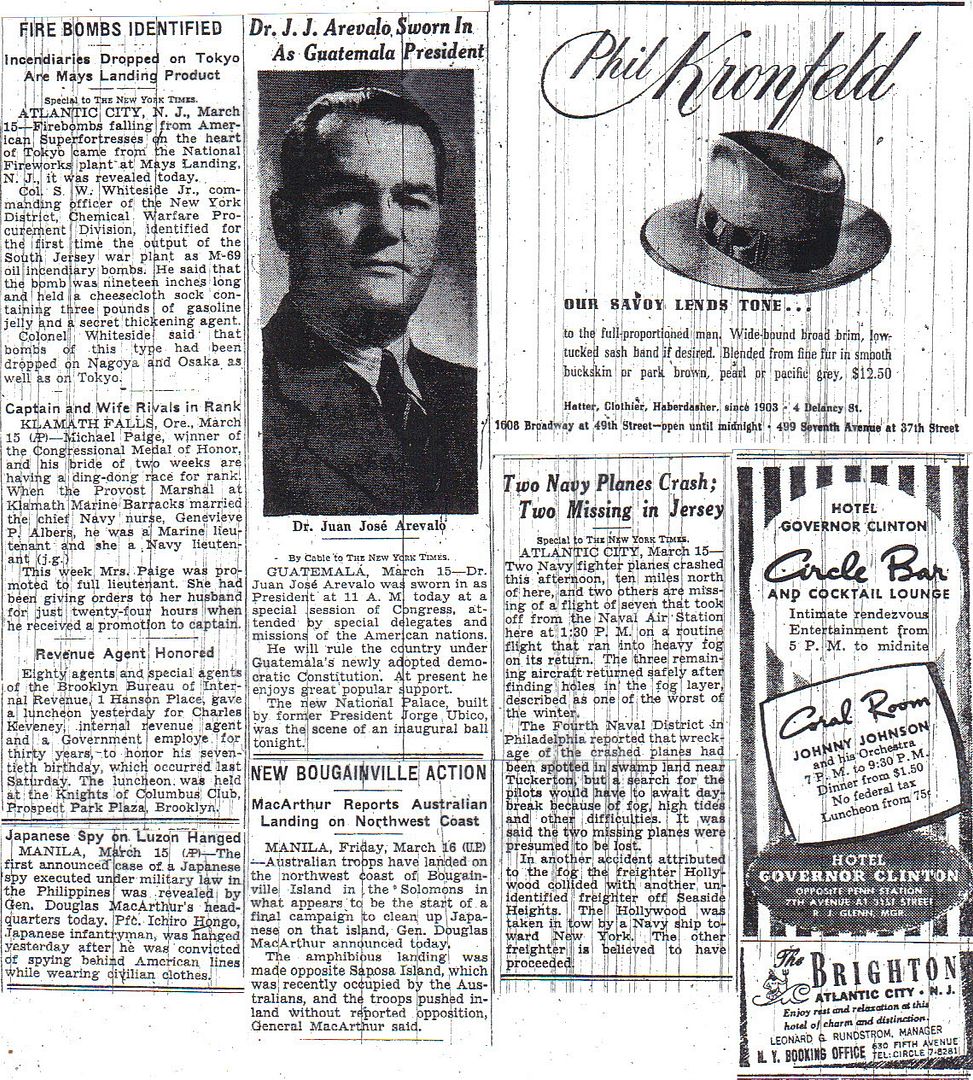
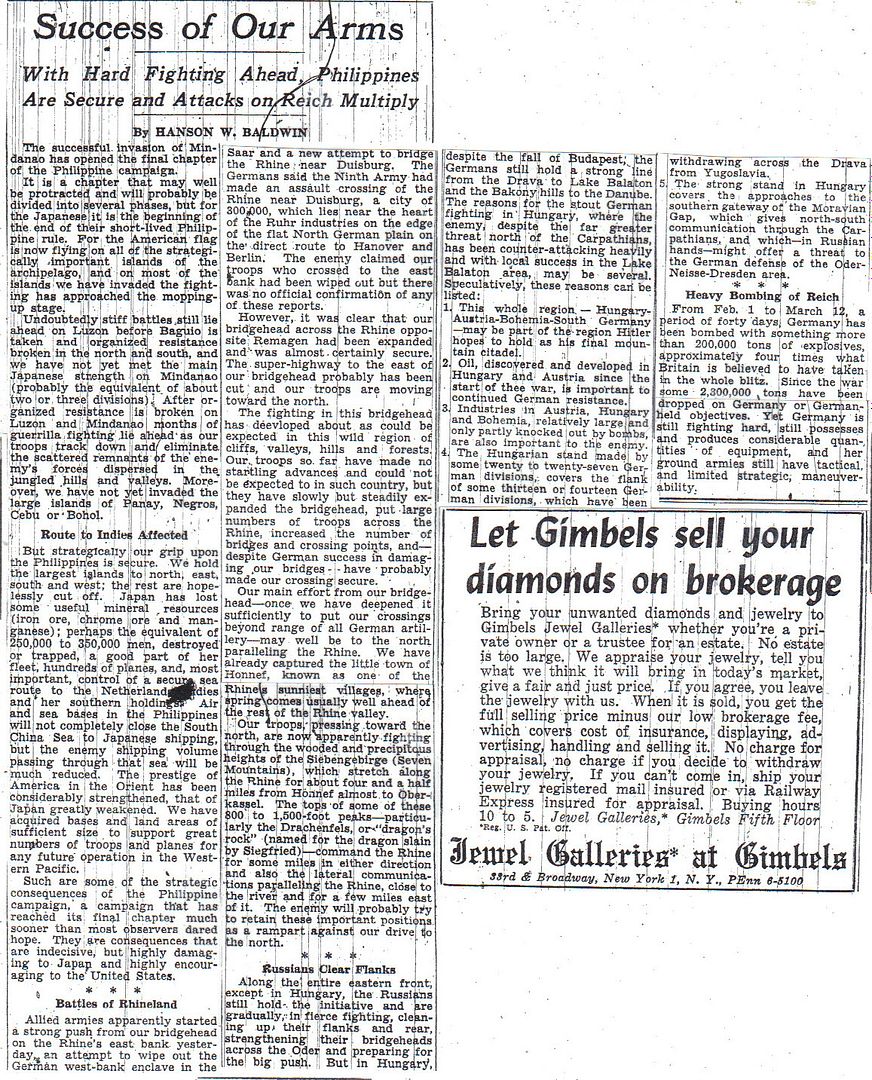
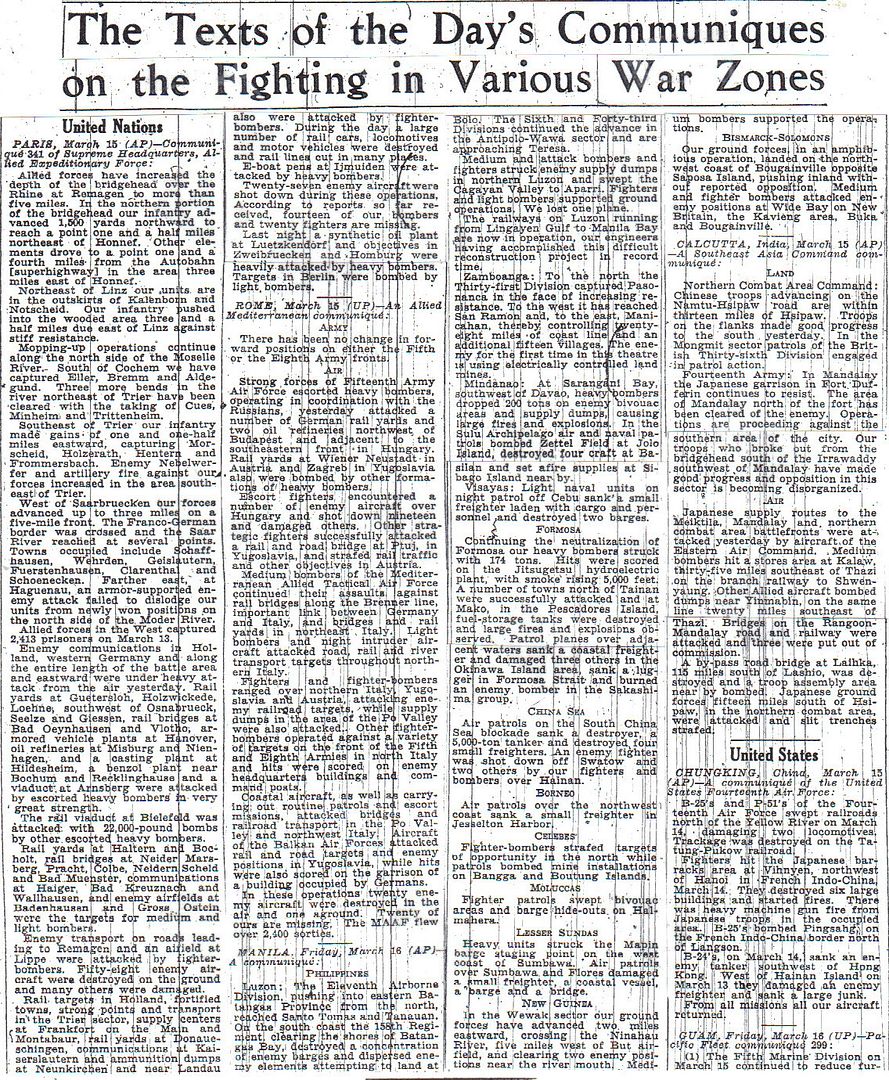
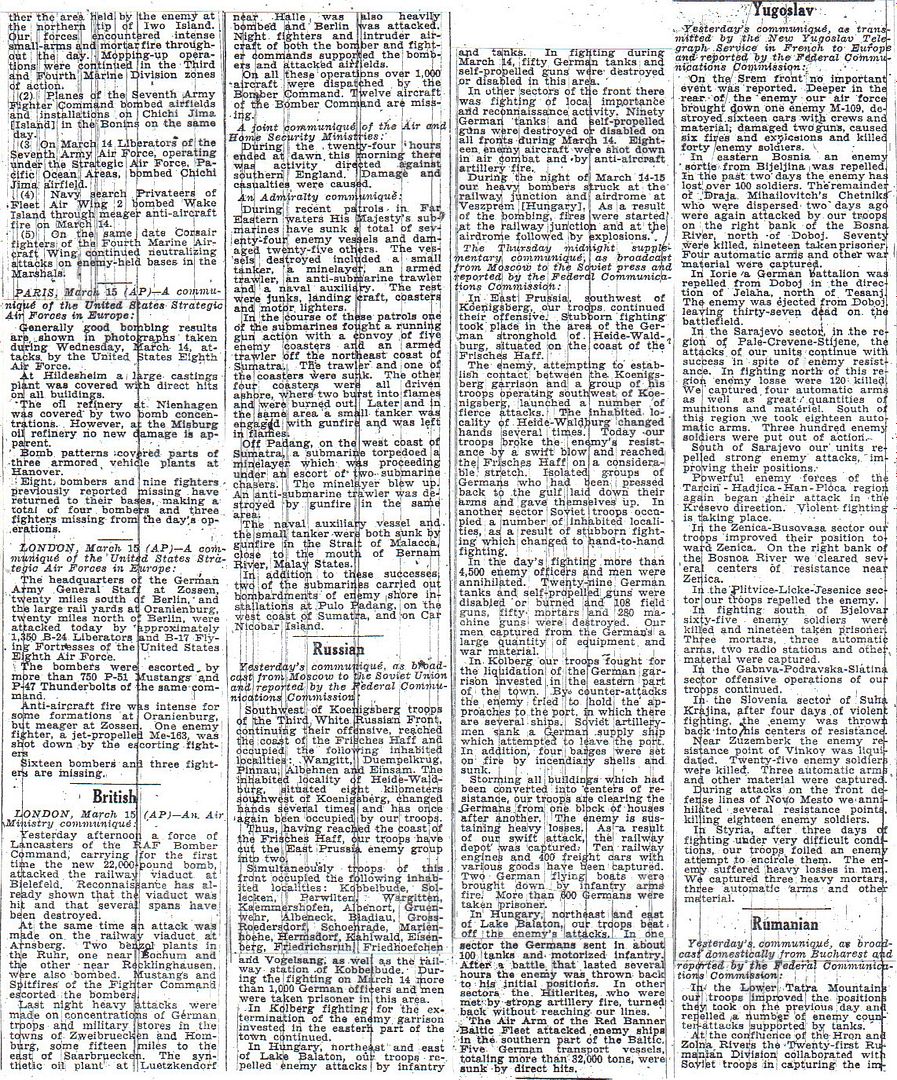
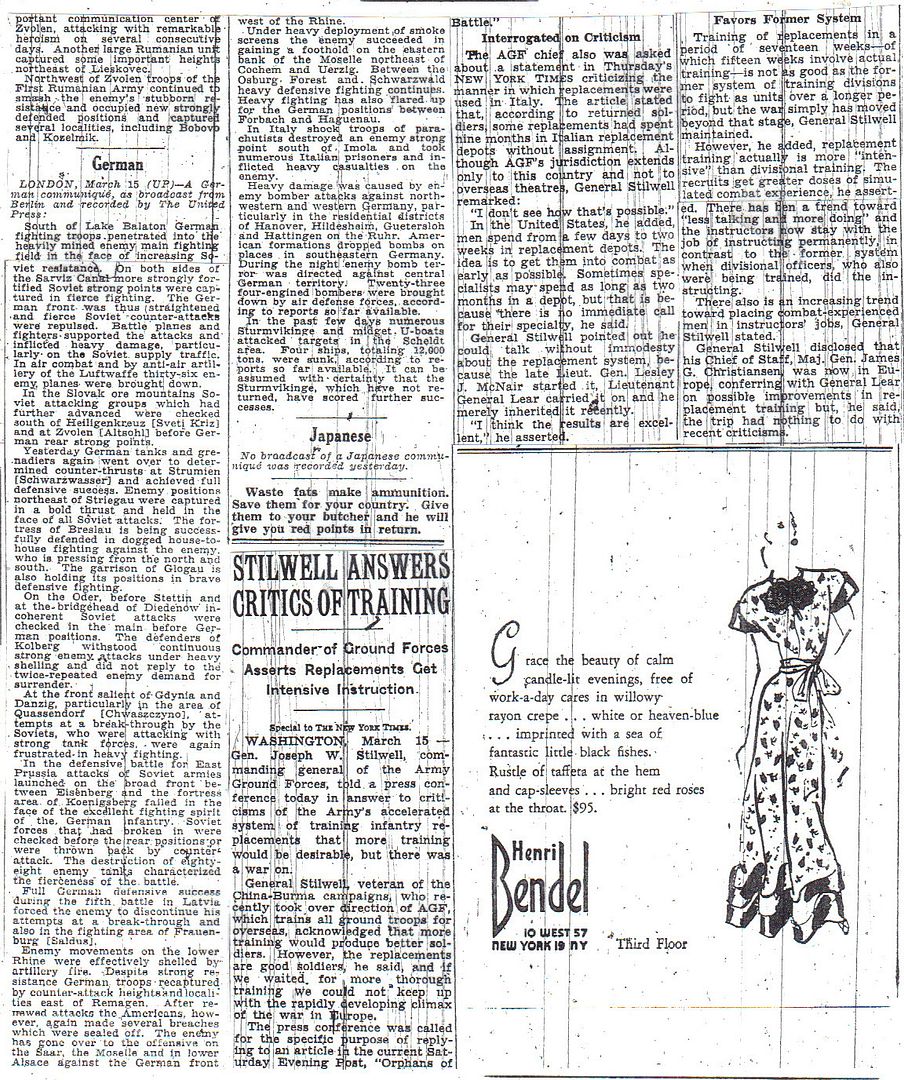
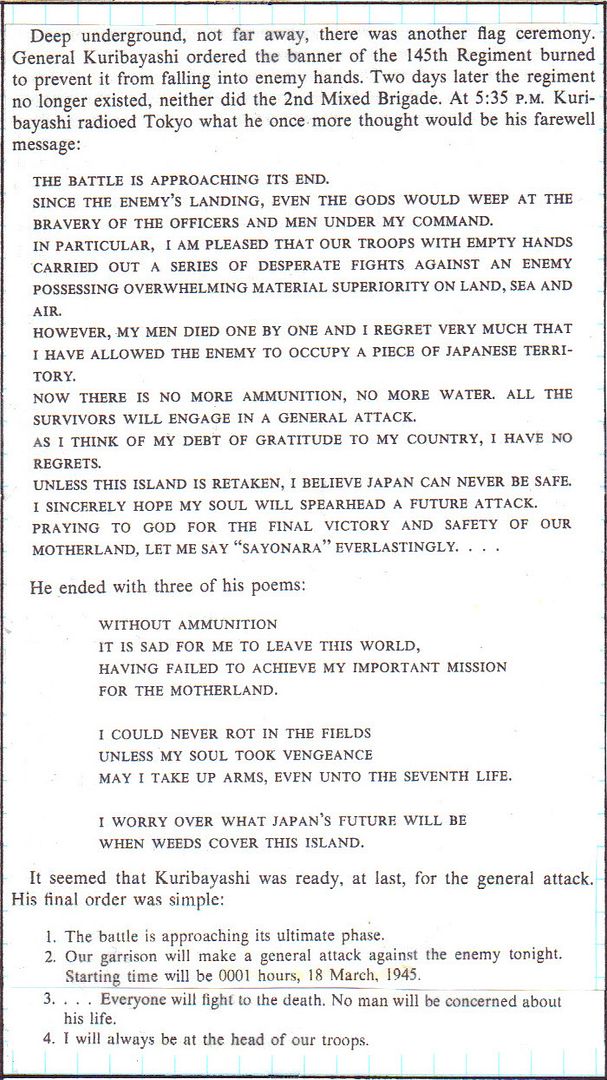
John Toland, The Rising Sun: The Decline and Fall of the Japanese Empire, 1936-1945
http://www.etherit.co.uk/month/2/16.htm
March 16th, 1945 (FRIDAY)
UNITED KINGDOM:
Destroyer HMS Gabbard launched.
Submarine HMS Scorcher commissioned.
NORTH SEA: Destroyer HMS Fandale collided with HMS Wallace off the Humber.
GERMANY: US 7th Army takes Bitche as the Siegfried Line begins to break.
Rudolf Hoess, the former commandant of Auschwitz, declares that he gassed two million Jews on Himmler’s orders between June 1941 and the end of 1943.
Hohenlychen: Himmler takes to his bed, feigning an attack of influenza.
General der Infanterie von Krosigk 16th Army is killed at Kanden in Courland. (138)(Russ Folsom)
BALTIC SEA: U-367 sank in the Baltic Sea near Hela, in position 54.25N, 18.50E, after hitting a mine laid by the Soviet submarine L-21 three days earlier. 43 dead (all hands lost).
COMMONWEALTH OF THE PHILIPPINES: US troops land on Basilan island.
JAPAN: Tonight 307 US B-29 bombers set three square miles of Kobe alight, killing or injuring 15,000 people.
Matsuwa in the Kurile Islands is bombarded by US Forces.
BONIN ISLANDS: Iwo Jima: Central Field airfield is declared operational, with one strip graded to 5,200 feet (1585 meters), the other to 4,800 (1463 meters).
These operations of the P-51s and P-61s had been made possible by the early development of the airfields for which the battle of Iwo Jima had been fought. Along the central plateau of Iwo the Japanese had laid out three airfields, sometimes called, from the neighbouring village, Montoyama No. 1, No. 2, and No- 3 or simply South, Central, and North fields. The first had two strips, 5,025 and 3,965 feet (1532 and 1209 meters) long. Central Field had two runways, 5,225 and 4,425 feet (1593 and 1349 meters), built in the form of an X. The third, with a single strip, never became operational. The basic plan (WORKMAN) for the development of Iwo into an air base, drawn up in October, contemplated the use where possible of existing Japanese facilities, and although the whole complex was to serve primarily as a very long range base, the most pressing job was the rehabilitation of some strips for local fighter use. The WORKMAN schedule, a Navy responsibility, was as follows: at No. 1, one 5,000-foot (1524 meter) runway was to be rehabilitated for fighter operations by D Plus 7; at No. 2, the northeast-southwest runway was to be repaired for fighter use by D plus 10 and the east-west runway extended into a 6,000-foot (1829 meter) fighter strip by D Plus 50; later, by D plus 110, the northeast-southwest runway was to be extended to 8,500 feet (2591 meters) for B-29s and a second 8,500-foot runway was to be built parallel to the first; at No. 3, one 5,000-foot runway was to be ready for fighters by D plus 50.
All runways were to be 200 feet (61 meters) wide. Construction was assigned to Commodore R. C. Johnson’s 9th Naval Construction Brigade, made up of the 8th and 41st Naval Construction Regiments and one AAF unit, the 811th Engineer Aviation Battalion. The 8th Regiment was assigned to general construction, the other units to work on the airfields.
Three Seabee units went in with the assault troops on D-day to serve as shore parties and to begin work on the airfields as they were overrun. Determined enemy opposition upset the construction schedule but as the fields were captured, runways were rapidly made serviceable for minimum operations. One strip on South Field was being used by observation planes as early as 26 February (D Plus 7), and by 2 March the other strip was graded to 4,000 feet (1219 meters). On the 4th, DETACHMENT paid its first dividend when a B-29 in distress came in for an emergency landing. Two days later the P-51s came up from Saipan, and from then on, South Field was in constant use while construction was continued. Although work at Central Field was held up by the protracted land battle, on 16 March it too was operational, with one strip graded to 5,200 feet (1585 meters), the other to 4,800 (1463 meters).
On that day, Colonel William E. Robinson, staff engineer for XXI Bomber Command, landed at Iwo Jima to survey the possibilities of B-29 base development. From the point of view of B-29 crews, Iwo’s chief importance was that it would make fighter escort possible and serve as a haven for bombers in distress. But the planners had been interested also in its use as a staging base by which the tactical radius of the B-29 could be lengthened or its bomb load increased. It was for combat-loaded Superforts that the 8,500-foot (2591 meter) runways had been designed, and the WORKMAN plan had provided facilities for 60 to 90 of the bombers. Robinson was convinced that North and Central Fields could be built to serve as many as 150 B-29s, and after his return to Guam, he gave LeMay an amended base development plan. LeMay approved it on the day it was submitted, 26 March, as did Major General Willis H. Hale, who since Harmon’s death had been serving as deputy commander of the Twentieth. Major General James E. Chaney, Saipan’s island commander, and Admiral Hoover readily concurred, so that by 4 April Robinson had carried the plan to Oahu where Admiral Nimitz gave his final approval. In Robinson’s plan, North and Central fields were to be combined into one huge airdrome covering over 4 square miles (10.4 square kilometres) (half the surface of the island), with two B-29 runways, 9,400 and 9,800 feet (2865 and 2987 meters) long, and a 5,200-foot (1585 meter) fighter strip.
The engineers found the task of building airfields on Iwo Jima complex and often exasperating. Iwo, which had risen from the sea within the memory of living men, was still a semiactive volcano, and in many places sulphur-laden steam issued from crevices. Some areas that were honeycombed with steam pockets had to be avoided when runways or subsurface gasoline lines were laid out. Although the volcanic ash which covered the island’s surface worked more easily than the coral to which Pacific engineers were accustomed and could be readily compacted to sustain B-29 loads, when wet it eroded easily if compacted, and asphalt could be laid on an ash base only when dry. Unfortunately, heavy rains in the spring months delayed construction by keeping the surfaces wet for as much as a week at a time.
Even in good weather progress on the B-29 runways lagged, until in April the Seabees began working two ten-hour shifts a day and reduced drastically the effort devoted to construction of their own housing and other secondary facilities. In June the program suffered a setback when an asphalt area of approximately 80,000 square feet (7432 square meters) at Central Field was ruined by water penetrating the subbase; on another occasion it was necessary to remove the crushed stone and subgrade from some 1,500 feet (457 meters) of asphalt runway.
ATLANTIC OCEAN: At 0920, the Inger Toft in Convoy RU-156 was torpedoed and sunk by U-722 3 miles 270° from Neirst Point, Isle of Skye. The master and 29 crewmembers were picked up by armed trawler HMS Grenadier and landed at Loch Ewe.
The Coast Guard-manned destroyer escorts USS Lowe, Menges, Pride, and Mosely, which comprised Task Group 22.14, located the submerged German submarine U-866 off the coast of Sable Island and sank it with a loss of all hands.
Churchill looking forward to an early general election. He anticipates the great issue will be Socialism vs. freedom.
Of course, Britain made the wrong choice and has been getting poorer ever since.
On my latest news-gathering trip I came upon some articles about Churchill and Atlee taking sides in that battle. Look for them in June.
One of the few that had that recognition.
Few seem to have recognized it as the great issue since and few today seem to recognize (creeping) Socialism vs. (eroding) freedom as the great issue today, embodied in America as the federal government essentially ignoring without consequence (until the states and the people wake up) the U.S. Constitution, the only legal guardian of freedom against the tyranny of socialism.
A careful study of the history of the United States, especially seen in Supreme Court opinions and decisions, reveals freedom and the Constitution as written and originally intended, have been under attack from the very beginning.
The attack on our precious freedom and our special Constitution which protects it reminds me of how Jesus was under attack even before he was born. The world doesn't like the precious grace of Jesus or liberty.
Reminds me of this scripture (think of America and/or Mary as "the woman")...
and the dragon stood before the woman which was ready to be delivered, for to devour her child as soon as it was born (Rev 12:4).
Panel 8 has an article about the Britsh having sunk 74 ships in the Pacific. I find it interesting that although there is much coverage of U boat activity in the Atlantic, it appears that their are no British or Amercian submarines in the Atlantic. Even the day by day review post does not report any.
Was this purposeful or is it just not being reported?
IIRC, the allies were using mostly blimps, planes and destroyers to kill U-boats towards the end of the war. It wasn’t remotely efficient to use subs to hunt German U-boats.
Our subs were mostly in the Pacific strangling Japan’s raw material supply lifeline!
There was no German shipping in the Atlantic to attack. After the Bismarck was sunk German surface ships rarely left port. In those days subs were poor at anti-submarine warfare, so there was really no need for them.
On the other hand, we were trying to do to the Japanese what the Germans had done to Anglo-American shipping, only on a more successful basis. So, we sent as many subs to the Pacific as we could.
Bump to keep Homer from crying.
What would they attack?
Earlier in the war, the Brits (and one Polish boat) operated in the North and Baltic seas. The British subs were also active in the Med against the Italians. The few German merchant ships in the Atlantic were those caught in neutral ports when the war broke out and they made a run for home.
Interesting brief overview of the disproportionate costs of submarine warfare here: http://www.navy.mil/navydata/cno/n87/history/wwii-campaigns.html
More than a few U-boats outbound and inbound from Saint Nazaire and La Rochelle were sent to the bottom by British subs laying in ambush.
Disclaimer: Opinions posted on Free Republic are those of the individual posters and do not necessarily represent the opinion of Free Republic or its management. All materials posted herein are protected by copyright law and the exemption for fair use of copyrighted works.